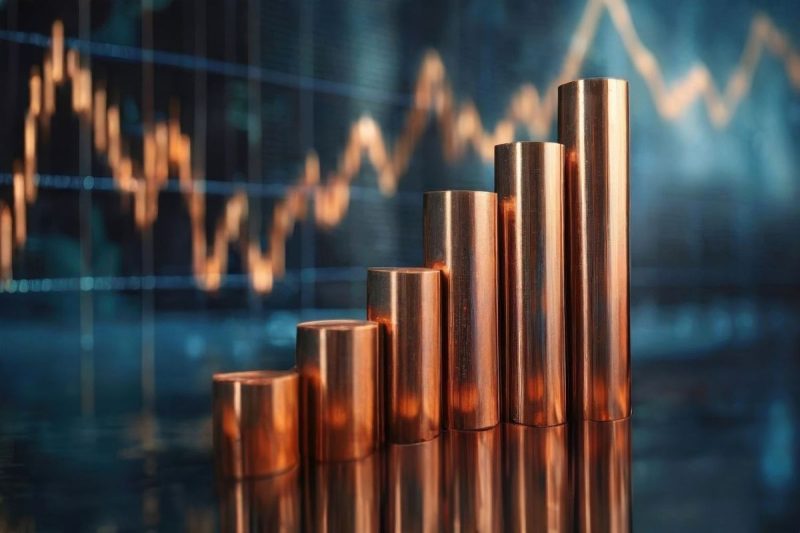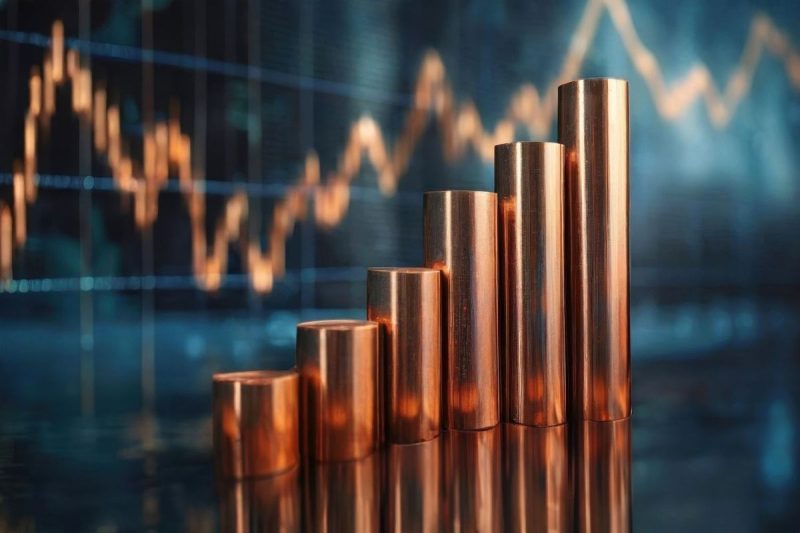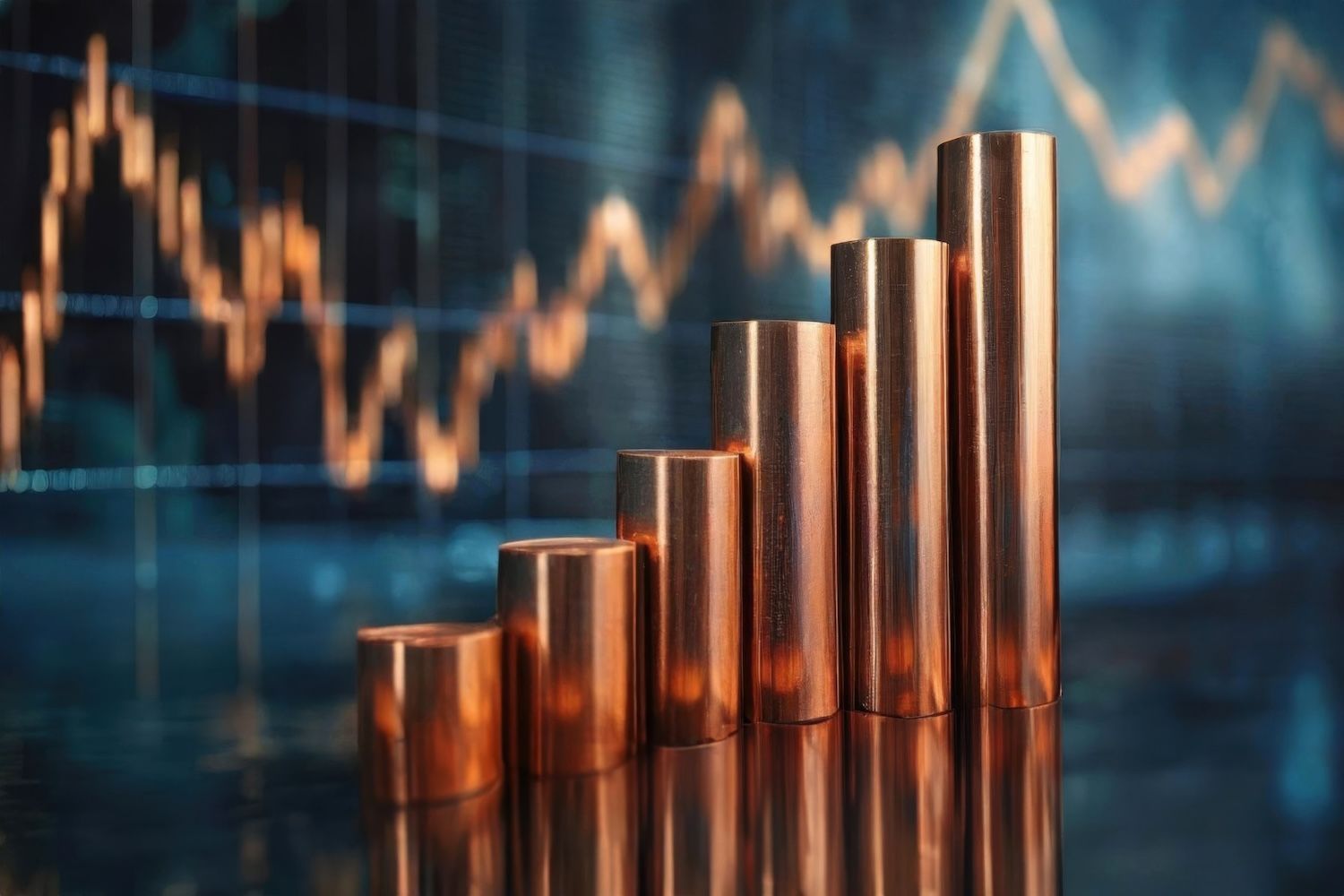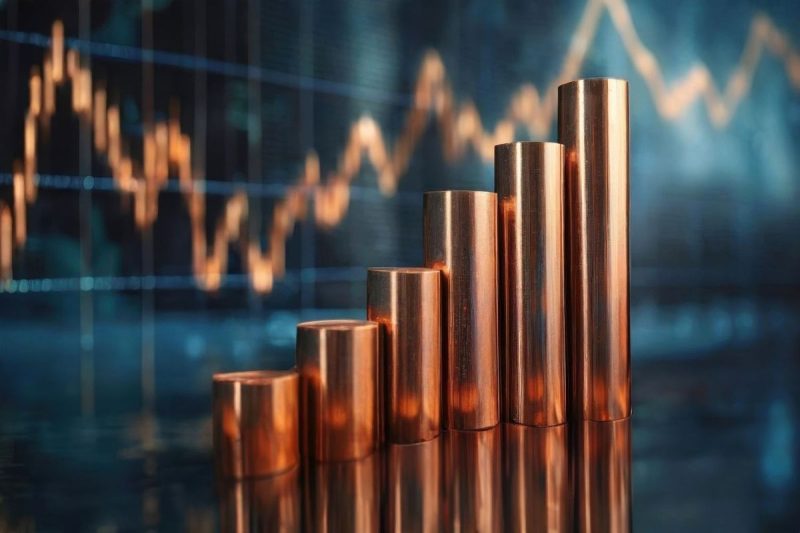Copper Price Update: Q2 2025 in Review



The copper price was volatile during the second quarter of 2025, but remained elevated compared to the price point near the start of the year.
Several factors were at play for copper during the second quarter, most notably the ongoing threat of tariffs on several sectors with close ties to the red metal. This also caused significant fallout in global financial sectors, with economists early in the quarter raising the spectre of a widespread recession.
Uncertainty, fear, and speculation were primary price drivers as metal traders, market movers, and investors tried to determine the best investment strategy against the backdrop of a chaotic economic landscape.
What moved the copper price?
Copper started the quarter in freefall.
After reaching an all-time high of US$5.22 per pound on the COMEX on March 26, the price plummeted to US$4.06 on April 8. Although it wouldn’t stay there long, by April 11, it had climbed back above US$4.50 and continued to US$4.88 on April 22.

Copper price chart, April 01 to July 23, 2025
via TradingEconomics
From the end of April, all of May and much of June, the copper price was volatile but range-bound, trading between US$4.50 and US$4.80.
However, the end of June saw a surge in momentum in the market, as the price began to climb, and on June 30, it reached US$4.97 per pound.
Since then, the price has soared. Setting a new all-time high of US$5.65 per pound on July 10.
Supply and demand by the numbers
Over the past few years, a growing imbalance has developed in the copper market, as demand growth has outpaced the expansion of primary and secondary supply lines.
According to a June 24 press release, data from the International Copper Study Group (ICSG) showed a 3.2 percent growth in refined production, with a combined gain of 4.8 percent from China and the Democratic Republic of the Congo (DRC), the two largest producers globally. Further increases came from Asia, where output was 3.5 percent higher.
The increased levels were offset by Chile, where smelter output fell 9.5 percent, due to smelter maintenance shutdowns.
However, the refined production outpaced mining production, which rose just 2 percent during the period. Peru accounted for a 5 percent year-over-year growth due to increased output at MMG’s (OTC Pink:MMLTF) Las Bambas, Anglo American (LSE:AAL,OTC Pink:AAUKF,OTC:NGLOY) and Mitsubishi’s (OTC Pink:MIMTF) Quellaveco and Chinalco Mining’s (OTC Pink:ALMMF) Toromocho mines.
Likewise, production in DRC surged by 8 percent, attributable to the expansion of the Ivanhoe Mines (TSX:IVN,OTC:IVPAF) and Zijin Mining’s (OTC Pink:ZIJMF,HKEX:2899,SHA:601899) joint venture Kamoa-Kakula mine.
Demand continued to grow at a higher rate than refined output during the first quarter of 2025, with the ICSG suggesting a 3.3 percent increase in copper usage.
The largest segment came from Chinese markets, which required 6 percent more copper than in 2024, but this demand occurred during an 11 percent decline in net refined imports into the country. China is the world’s largest consumer of copper, accounting for approximately 58 percent of global demand.
Outside of China, demand was essentially flat, with high demand from Asian, Middle Eastern and North African countries being offset by weak demand in Europe and North America.
Overall, the data provided by the ICSG indicated a 233,000 metric ton surplus of refined copper through the first four months of 2025, a slight decrease from the 236,000 metric tons during the same period in 2024.
Outside the numbers
“Yes, we believe we have moved into a supply deficit in 2025 and that the market is currently in deficit. Uncertainties in the financial markets (trade, growth and inflation) have had a negative impact on copper demand, but this has been offset as copper is becoming less tied to global economic growth and more tied to industries that provide structural growth to the market,” he said.
White went on to explain that AI data centers, emerging economies and the energy transition are all putting increased stress on copper supply.
Furthermore, the supply outlook was not expected to keep pace with demand this year. Q1 2025 mined copper production has indicated low production, and the copper supply outlook for this year has already worsened with the first major disruption of the year,” he added.
The shutdown referred to by White was at the Ivanhoe-Zijin Kakula-Kamoa mine in the DRC.
Ivanhoe reported a temporary interruption of underground mining at the Kakula mine on May 2. The company cited seismic activity and initiated a partial shutdown of operations at phase 1 and 2 concentrators, utilizing surface stockpiles.
Operations at the mine were suspended until June 11, when the company announced it had initiated a restart. It also stated that it was slashing production guidance by 28 percent due to the impact, with the revised number falling between 370,000 and 420,000 metric tons, down from the previous range of 520,000 to 580,000 set in January.
The difference in guidance accounts for more than half of the projected surplus in the ICSG report, demonstrating just how tight the copper market has become.
The Trump effect
Volatility has been present since the start of the year, with much of it attributed to uncertainty stemming from an ever-shifting US trade policy under President Donald Trump.
Commodity prices plummeted at the start of the second quarter, with copper losing 22 percent between its quarterly high of US$5.22 on March 26 and April 8, when it fell to US$4.06.
The drop came alongside the fallout from the “Liberation Day” tariffs Trump announced on April 2, which applied a 10 percent baseline tariff to imports into the United States from all but a handful of countries. It also threatened the imposition of more significant retaliatory tariffs to take effect on April 9.
Additionally, the United States initiated a tit-for-tat tariff war with China in early April, starting with a 34 percent tariff on Chinese imports, which quickly rose to 145 percent on Chinese imports and 125 percent on US exports to China.
The effect of the tariffs caused significant declines in major US indices, with the Dow losing 9.5 percent, the S&P 500 shedding 10 percent, and the Nasdaq losing 11 percent in two days. More than $6 trillion was wiped from the markets over two days, the most significant such loss in history.
More importantly, the uncertainty seeped into the US bond markets, causing yields on the 10-year Treasury to rise sharply to 4.49 percent as investors began to dump US bonds. The rising rates came as China and Japan both sold holdings back into the market in an attempt to counter Trump’s trade plans.
The combined effect led analysts to suggest that a recession was imminent, prompting broad sell-offs in the commodity markets as traders worked to dispose of stockpiles of high-value inventories.
Copper is susceptible to recessions due to its wide range of applications, which are heavily dependent on consumer spending.
Ultimately, a sliding stock market and spiking bond yields prompted Trump to announce a 90-day pause on the retaliatory tariffs, stating that it would allow countries to come to the table and negotiate a deal with the United States.
Although the rout of the copper market was short-lived, it demonstrated the push-pull that tariffs and trade policy can have on copper prices.
In February, Trump signed an executive order which invoked section 232 of the Trade Expansion Act to initiate an investigation into the impact of copper imports on all forms of national security.
In the order, Trump noted that while the US has ample copper reserves, its smelting and refining capacity has declined. China has become the world’s leading supplier of refined copper, commanding a 50 percent market share.
“The supply and demand imbalance has recently been catalyzed with the US trade actions, where copper stocks have moved into the US on speculation that the Section 232 investigation into copper may result in a copper tariff,” White said.
He explained that the global inventory system has become fragmented. With the supply deficit, it has become increasingly difficult to source physical copper, resulting in drastically lower inventories on the London Metal Exchange (LME) and Shanghai Futures Exchange (SHFE).
The administration reached a decision early in the third quarter, and on July 8, Donald Trump announced a 50 percent tariff on all copper entering the United States.
The move caused prices on the COMEX to spike to record highs, triggering more panic buying among traders as they raced to transfer above-ground copper stocks into US-based facilities to avoid the additional tariff costs.
While ICSG hasn’t published numbers since May, it was already demonstrating then that significant stockpiles were being moved between international warehouses and the US. It reported that stocks at the LME had declined 122,900 metric tons from the start of the year, while stocks at the COMEX and SHFE had both posted gains of 80,970 metric tons and 31,619 metric tons, respectively.
“Copper is globally fungible. It’s like oil. The sanctions don’t work on Russian oil or Iranian oil, because it just flows around. Copper can do that, too. So it’s incorrect to think that a copper tariff, therefore, copper is up, and all copper stocks have to go up. If you’re a copper miner in Chile selling to China, then the US tariff has no direct bearing on your business whatsoever,” he said.
Tigre also explained that the US imports 50 percent of its copper needs, and there is no way that tariffs are going to fix that overnight.
“The mines just aren’t there. The help he’s (Trump) provided with permitting is highly relevant, and it has already helped; that’s okay. You get the permits, and then you have to build the mine, right? So it’ll be years before the incentives create more US production. Meanwhile, it’s Dr. Copper. It goes in everything, so consumers, manufacturers, everybody’s got this added cost,” he said.
Where does copper go next?
Beyond the tariffs, the fundamentals remain, as Tigre pointed out, the world is dependent on copper and demand for the red metal has been increasing faster than supply.
“There aren’t enough copper projects on the pipeline, not ones big enough to matter. So I’m extremely bullish on copper. All those reasons to be bullish on copper are still on the table in front of us, and when I first made the call, copper was around four bucks or something, and now, if we’re going there at five, almost six, and all that tailwind is stil to come and push it higher,” Tigre said.
While he remained positive on copper’s long-term outlook, he declined to say where the price would end up at the end of the year.
Even though copper may be one of the safer commodity bets owing to its staggering demand and low supply, investors should keep in mind the broad economic landscape when entering into a position with a metal that can change quickly with consumer spending.
Securities Disclosure: I, Dean Belder, hold no direct investment interest in any company mentioned in this article.



